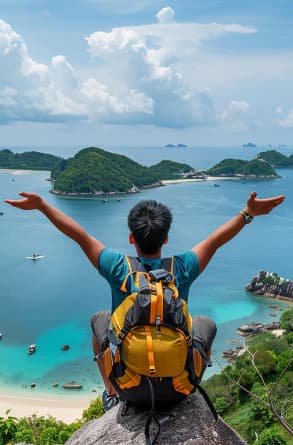
Close


Dar es Salaam, Tanzania’s largest city and economic center, is a thriving coastal metropolis on the shores of the Indian Ocean. Known for its bustling markets, vibrant nightlife, and diverse cultural heritage, Dar es Salaam is an important hub for trade and commerce in East Africa. The city’s waterfront is lined with scenic beaches, bustling fish markets, and historical landmarks, reflecting a blend of Swahili, Arab, and colonial influences. Kivukoni Fish Market is a popular attraction where visitors can observe the daily catch and experience local life.
In addition to its urban appeal, Dar es Salaam serves as a gateway to the tropical islands of Zanzibar, Mafia, and Pemba, which offer pristine beaches and rich marine life. The city is also home to the National Museum of Tanzania, where visitors can learn about the country’s history, including its archaeological discoveries and traditional cultures. Dar es Salaam’s fusion of urban life and coastal charm creates a unique experience, showcasing Tanzania’s modernity while staying true to its roots.





The Bagamoyo Ruins, located along the Tanzanian coast, are a compelling reminder of East Africa’s colonial and slave trade history. Once a bustling port and trade center, Bagamoyo was the last stop on the route for enslaved people who were shipped to Zanzibar and beyond. The ruins include ancient Arab buildings, a centuries-old mosque, and the haunting remains of the slave trade center. Visiting Bagamoyo offers travelers a rare glimpse into the darker history of the East African coast and the complex legacy of colonial influence in the region.
In addition to its historical significance, Bagamoyo is a charming town with a laid-back atmosphere, attracting artists, historians, and travelers alike. The town hosts the Bagamoyo Arts Festival each year, showcasing local and regional talents in music, dance, and theater. Guests can also explore the Old Fort, the Catholic Mission, and the Livingstone Tower, each telling a unique story of the town’s past. For those interested in the historical and cultural foundations of Tanzania, Bagamoyo offers a captivating journey through time.


Swahili culture, which stretches along the East African coast from Kenya to Tanzania, is a fascinating fusion of African, Arab, and Persian influences. This culture has been shaped over centuries, largely due to trade connections across the Indian Ocean. Known for its unique architectural styles, vibrant clothing, and rich traditions, Swahili culture is especially evident in cities like Mombasa, Lamu, and Zanzibar. Traditional Swahili homes, with intricately carved wooden doors and coral stone structures, are iconic to the region and are a testament to this unique cultural blend.
Visitors can immerse themselves in Swahili culture by exploring local markets, tasting flavorful dishes like “Pilau” and “Samosas,” and attending cultural festivals. The Swahili language itself, a blend of Bantu and Arabic, serves as a unifying language across East Africa. Swahili culture is welcoming and deeply rooted in hospitality, with customs like “Ukarimu” (generosity) and “Karibu” (welcome) reflecting the warmth of the people. Engaging with this culture offers a rich and memorable experience for travelers interested in the diverse heritage of East Africa.








